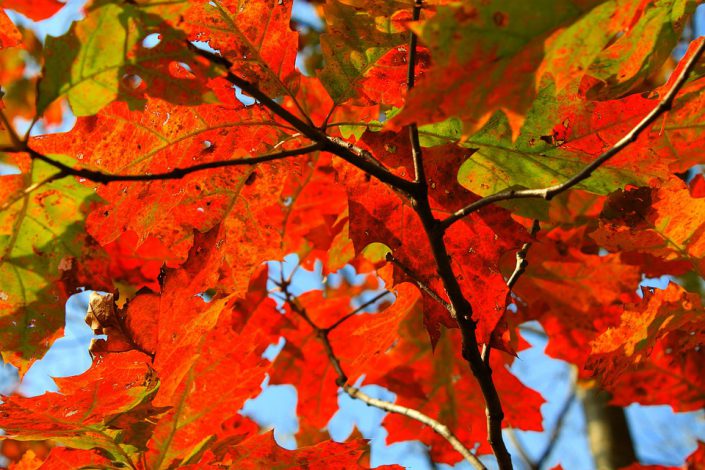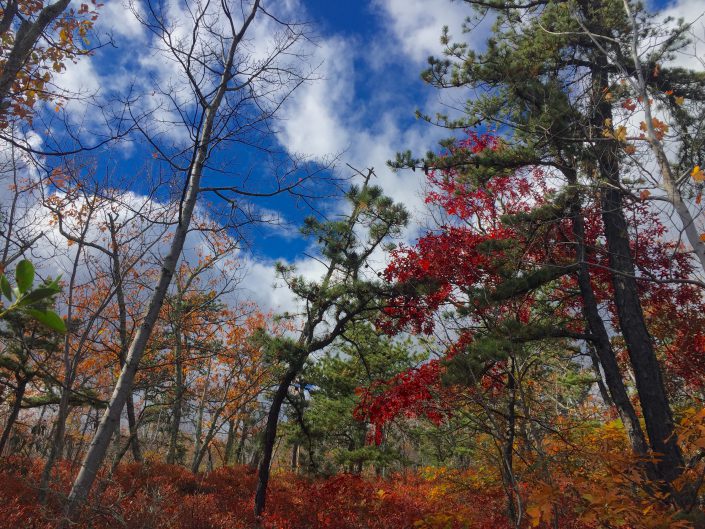By Corrine Henn, Communications Coordinator
While many have been busy mourning the end of summer in anticipation of colder weather and longer nights, the changing leaves outside are indicative of an incredible natural process that too often goes unappreciated – not for its lack of beauty, but the science behind it.
Some years it feels as though we barely get to experience the fall season before we jump into winter, but the fall foliage this year has been a beautiful spectacle so far. Here at CWF, we are suddenly presented with a magnificent backdrop of oranges, reds and yellows in our field work with so many wildlife species in our mountains and forests.
Yet as you go outside to explore and enjoy the season, it might be worth asking, why exactly do leaves change color?

To put it simply: Trees are preparing for winter.
Throughout the spring and summer months, leaves work overtime to provide and store nutrients for the tree. How? The sun triggers the production of chlorophyll, which is a pigment found inside leaves that gives them their green color. Over the warm months, chlorophyll absorbs sunlight and converts carbon dioxide and water into oxygen and carbohydrates, respectively. This complex process is known as photosynthesis and is vital to the health of the tree.

As the days shorten and the nights get longer, exposure to the sun is naturally limited and the production of chlorophyll slows considerably, until eventually it is broken down completely. As the chlorophyll is absorbed by the tree for the long winter ahead, other pigments that exist in the leaves become more visible, ultimately exposing the red, orange and yellow hues we see during the fall.
So, the next time you go outside to marvel at the beautiful fall colors, don’t forget to appreciate just how hardworking nature truly is!
Corrine Henn is a communications coordinator for Conserve Wildlife Foundation




